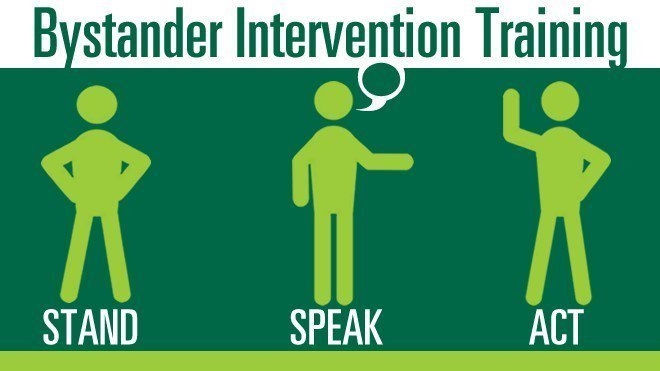
Sexual harassment in the workplace is a serious issue that can have devastating effects on both employees and employers. So, it’s crucial for businesses to implement effective strategies to prevent harassment.
From costly lawsuits to tarnished reputations and lifelong traumas, it can be a nightmarish experience for everyone.
Take the recent case of McDonald’s franchisee, Coughlin Inc., who had to pay a $1.6 million penalty imposed by the Equal Employment Opportunity Commission (EEOC). Although Coughlin was only handling operations for the franchise, they were still held liable for the actions of a manager who harassed male and female workers over five years.
This serves as a cautionary tale for all businesses. To protect your workforce and avoid legal liabilities, you must have a strong anti-harassment strategy in place.
This includes providing thorough training to all employees at every level, sensitizing them to the issue of harassment, and teaching them how to identify, prevent, and report any incidents.
Investing in an effective sexual harassment prevention strategy is essential for creating a safe and harassment-free workplace, which can lead to increased employee retention and preserve the integrity of your company.
Join us as we delve into the topic of sexual harassment prevention and explore the best strategies for protecting your workforce.
What Is Sexual Harassment Prevention in the Workplace?
Sexual harassment prevention can be defined as the measures and strategies organizations take to protect their workforce against all forms of violence and harassment. This is done to create a safe work culture and promote mutual respect and a supportive environment for employees.
Although many think employees can easily identify sexual harassment, this is not always the case. The obvious ones are easily identifiable but the subtle ones, such as comments about physical appearance, flirting, and cyberbullying, are not easily identifiable. This is why sexual harassment training should be a part of your anti-harassment strategy.
As per statistics, 32% of employees were unaware of the fact that jokes could also constitute sexual harassment. This is exactly why training is important to get your employees on the same page about what constitutes harassment.
Sexual harassment in the workplace confuses rewards for performance with rewards for attractiveness and sexual availability. – Warren Farrell
Top 6 Strategies to Prevent Sexual Harassment in the Workplace
There are several strategies that you can implement to prevent sexual harassment in the workplace. Here are the top six:
1. Develop a Sexual Harassment Policy
To begin with, you need to create a sexual harassment policy because if you don’t have one, then your employees won’t know what is expected of them.
Some states make it mandatory for organizations to have a proper anti-harassment policy to prevent workplace harassment. For example, California, Illinois, Connecticut, New York, and others have a standard requirement to create sexual harassment policies for organizations.
Sexual harassment prevention policy defines everything employees need to know about your organization’s stance against harassment. It reflects that you have zero tolerance for all forms of harassment. A sexual harassment policy should have the following:
- Definition and scope of sexual harassment
- Procedure to be followed by the victim to file a complaint
- Information on whom they should report their claims to
- Real-life examples and scenarios to interpret what constitutes sexual harassment
- Disciplinary actions that the organization will take against offenders
An effective policy makes it easier for employees to identify, report, and take the right action against harassment. It also makes them feel safe and protected, knowing that the company they work for takes the right measures to protect their well-being and dignity.
Pro Tip: You should clearly mention the state policies along with your internal policies and procedures. Together, they would act as a strong shield against all forms of harassment.
For example, if you are in California, make sure you provide California sexual harassment prevention training along with the organizational policies that you have created.
Watch: California Sexual Harassment Training for Employees
2. Provide Sexual Harassment Training to Employees at All Levels
To build a safe work culture, it is first important to create awareness among your employees. Some states require organizations to create an effective program for sexual harassment prevention in the workplace.
For example, Jim Bennett, the Director of the Illinois Department of Human Rights (IDHR), states – “The release of IDHR’s model sexual harassment prevention training is a major step in ensuring that every working person in Illinois understands the seriousness of sexual harassment. I urge all Illinois employers – small businesses and major corporations alike – to use this resource.”
Watch: What is Illinois State Sexual Harassment Training for Employees
According to the sexual harassment prevention training by IDHR, employers must develop training programs that are equivalent to or exceed the standards set out by IDHR’s Section 2- 109 (B).
Not everyone has a clear understanding of what constitutes sexual harassment. There’s a wrong perception that physical contact is the only form of harassment. This is not true. Sharing inappropriate pictures, insensitive jokes, and sexually colored remarks can also be a form of harassment.

Take this scenario for example. Clara is one of the most efficient employees but often gets teased because of her poor dating life. Her colleagues, especially Georgina and Patrona, often tease her about the same and link her name with some clients or colleagues who work with her. Initially, this joke was between the 3 of them, but with time, it became the standing joke across the office. Clara was highly affected and couldn’t figure out how to deal with this.
So, what’s missing here?
The knowledge.
She didn’t know that teasing is also a form of workplace harassment.
Fact: Any unwelcomed behavior, remark, or conduct – be it verbal or non-verbal, which is sexual in nature, constitutes sexual harassment.
So, get your employees on the same page and help them understand what constitutes sexual harassment. Most importantly, train your employees at all levels – managers, supervisors, partners, and all other personnel holding executive and administrative positions. This will raise awareness and make them understand their role in preventing workplace harassment.
Pro tip: Use a Learning Management System (LMS) to create, deliver, track, and analyze your online training programs. These platforms provide a range of features like a course library, ready-made training templates, assessments, surveys, integrations, collaboration, and LMS reporting tools.
Want to take the first step toward a respectful workplace?
Start your POSH training with LMS today!
3. Put Proper Reporting Procedures in Place
One of the effective ways to prevent sexual harassment in the workplace is to have proper reporting procedures. There should be a clear reporting system that victims can follow to report sexual harassment.
But the problem is that the act of reporting is in itself a big challenge for victims.
Why so?
There can be two reasons for this:
- Complicated reporting procedure
- Fear of retaliation
In fact, according to statistics, 85% of victims did not file any complaint. Surprisingly, they did not even talk about it with their superiors and co-workers. Instead, they decided to leave the organization and look for opportunities elsewhere.
So, what can we conclude from the above? Turnovers are a direct consequence of sexual harassment.
The victim should not have any doubt about what to do or who to go to with such a report . The procedures should be clearly stated so that victims have a sound knowledge of what they should do after encountering harassment.
Pro tip: Explain the reporting process and provide an easy-to-understand mechanism for reporting harassment cases. The best way is to offer a sample complaint form. Encourage them to report incidents both verbally and in writing.
4. Train Employees to Serve as Bystanders
Though HRs, managers, and supervisors are responsible for preventing sexual harassment, it is not always possible for them to monitor harassment 24/7. Therefore, you must train every employee to take the initiative and put them in charge of maintaining a safe workplace.
This way, companies can ensure that the warning signs are seen, reported, and acted upon. Train them to serve as helpful bystanders to foster a respectful and positive work culture.
What hurts the victim the most is not the cruelty of the oppressor but the silence of the bystander. – Elie Wiesel

As active bystanders, employees can play a proactive role. Helping them understand this role through training can inspire them to take action, leveraging the power of the masses to build a safe culture.
So, what training topics should you choose for your employees?
The goal is to equip your employees. Knowledge is power. There are several training topics to help your employees serve as more proactive bystanders. Here are a few examples:
Sexual Harassment Training
This form of compliance training is mandated by federal and state laws. With this program, you can train your employees to prevent all forms of harassment in the workplace. You can also help them identify cases of harassment and encourage them to report such instances to the correct authority.
Start Training Your Employees Faster With Pre-Built Courses
With workplace violence prevention training, you can identify, prevent, and respond to all kinds of violent incidents in the workplace. You can apply the right strategies, policies, and practices to handle violent situations.
Watch: How to Handle Workplace Violence | Training Course Introduction
Diversity, Equity, and Inclusion Training
A workplace where everyone is treated equally and fairly tends to be more proactive and good at solving all kinds of problems, including sexual harassment, discrimination, and bullying.
Watch: What Is Diversity, Equity & Inclusion? | Training Course Introduction
Ethics Training in the Workplace
Understanding ethical and unethical workplace behaviors help build a sustainable culture. Also, with this Ethics training, it becomes easy to understand the acceptable and unacceptable behaviors in the workplace.
Watch: Ethics Training in the Workplace | Course Introduction
5. Take Every Complaint Seriously
Now that you understand what constitutes sexual harassment, the magnitude of the problem, and the procedures to file a report, it’s time to implement the policies and procedures.
Taking action immediately upon receiving a complaint shows that you have a zero-tolerance policy against workplace harassment. Reporting a case of harassment is a big step for everyone. They have to overcome several barriers to finally report an incident.
Thoughts like – will anyone believe me? Will the company retaliate against me for taking action? Can prevent the victim from reporting an incident. Some feel that filing a report would threaten their career, so they feel safe to stay tight-lipped about the matter.
This is why it’s important to train them and encourage them to step up and speak out about all injustices happening to them and in their surroundings.
Remember: A sexual assault incident is bad for your company’s reputation and can further damage your goodwill if it escalates to a lawsuit.
Important News: Recently, US president Joe Biden, said in a statement that New York Governor Andrew Cuomo should immediately resign after an investigation concluded that Andrew was responsible for sexually harassing New York state employees. Read the full story here.
Hopefully, you can understand the gravity of this matter.
So, how can you encourage your employees to take action?
Build trust with your employees.
Give assurance to your employees that they can always approach you regardless of how minor the incident is. Take every complaint seriously and leverage the right steps as early as possible.
Watch: How to Build Trust With Your Team | Training Course Introduction
6. Take Appropriate Disciplinary Actions
Taking the right actions is crucial for building employee trust. Disciplinary action shows that every complaint is taken seriously and that the company takes immediate action to address the concern.
Without such proactiveness, employees will think that the company won’t take any action if harassment issues emerge. Also, it will discourage them from coming forward and speaking against the injustices happening within the workspace. In fact, those who commit harm will continue to act inappropriately.
Therefore, employers should promptly respond to reports of workplace harassment and thoroughly investigate the matter. Not taking appropriate disciplinary actions will create a toxic work culture where workplace harassment can become the norm.
Dishing out punishment shows the offenders that strict actions will be taken if they are found to be guilty. This makes them more mindful and prevents them from engaging in unsolicited behavior. Most importantly, it acts as a source of encouragement that motivates everyone to build a safe workplace.
So it’s clear being proactive about sexual harassment training can build a better workplace culture where employees feel safe and heard.
Have you decided on your strategy yet?
The sooner you get started the sooner you can begin to build a safe work culture, promote engagement, boost morale, and increase employee retention.
Watch: How to Conduct Employee Sexual Harassment Training in the Workplace
Frequently Asked Questions
What is harassment and what is not?
Workplace harassment includes verbally abusive behavior, vandalism, sexually colored remarks, pranks, bullying, insulting, ridiculing, and name-calling. However, if an employer takes reasonable action against an employee who fails to perform their duties, it would not be considered workplace harassment. Examples like changes in work schedule, requesting medical documents to show proof of absence, and measures to correct performance deficiencies will not be considered workplace harassment.
What are examples of harassment in the workplace?
Examples of workplace harassment include discriminatory harassment (racial/religion/gender/sexual orientation), personal harassment (offensive jokes, intimidation tactics, rude comments), physical harassment (threatening behaviors, direct threats to harm), psychological harassment (gaslighting the victim, promoting hostile work environment, belittling victim’s ideas), and sexual harassment (sharing pornography, sexual gestures, inappropriate touching, sexual comments).
Why is it important to prevent harassment in the workplace?
It is extremely important to prevent harassment in the workplace because it builds a safe culture, promotes engagement, increases employee retention, and protects you against legal liabilities. When employees are safe and there’s less conflict, they can better concentrate on their work, leading to increased productivity.
How can I prevent harassment?
Training is the best way to prevent harassment in the workplace. When you train your employees, they become aware of the internal policies as well as the state and federal policies. They learn what constitutes harassment and how they can report incidents of harassment to the right person. Plus, you should take strict disciplinary actions against the offenders to set an example for others.
How do I report harassment at work?
You should report the incident to your immediate supervisor/HR or the right authority responsible for handling such cases. They should investigate the matter and act immediately. However, you may seek legal remedies if the authorities do not take action.
Build a Safe Workplace With Sexual Harassment Prevention Strategies
Sexual harassment in any form is unacceptable. Therefore, having the best strategies is important to protect your workforce against all kinds of harassment and to build a safe working environment free from fear, conflict, violence, bias, and discrimination.
Hopefully you now have a better understanding of the best strategies to follow, including the importance of sexual harassment training in the workplace. Make sure you include the top-level authorities while creating the strategies.
Also, choose robust training software with readymade courses, assessments, virtual classrooms, collaboration tools, and reporting features. This will streamline your training development process through automation while enabling you to track learner progress and centrally manage your training programs.
FREE. All Features. FOREVER!
Try our Forever FREE account with all premium features!







